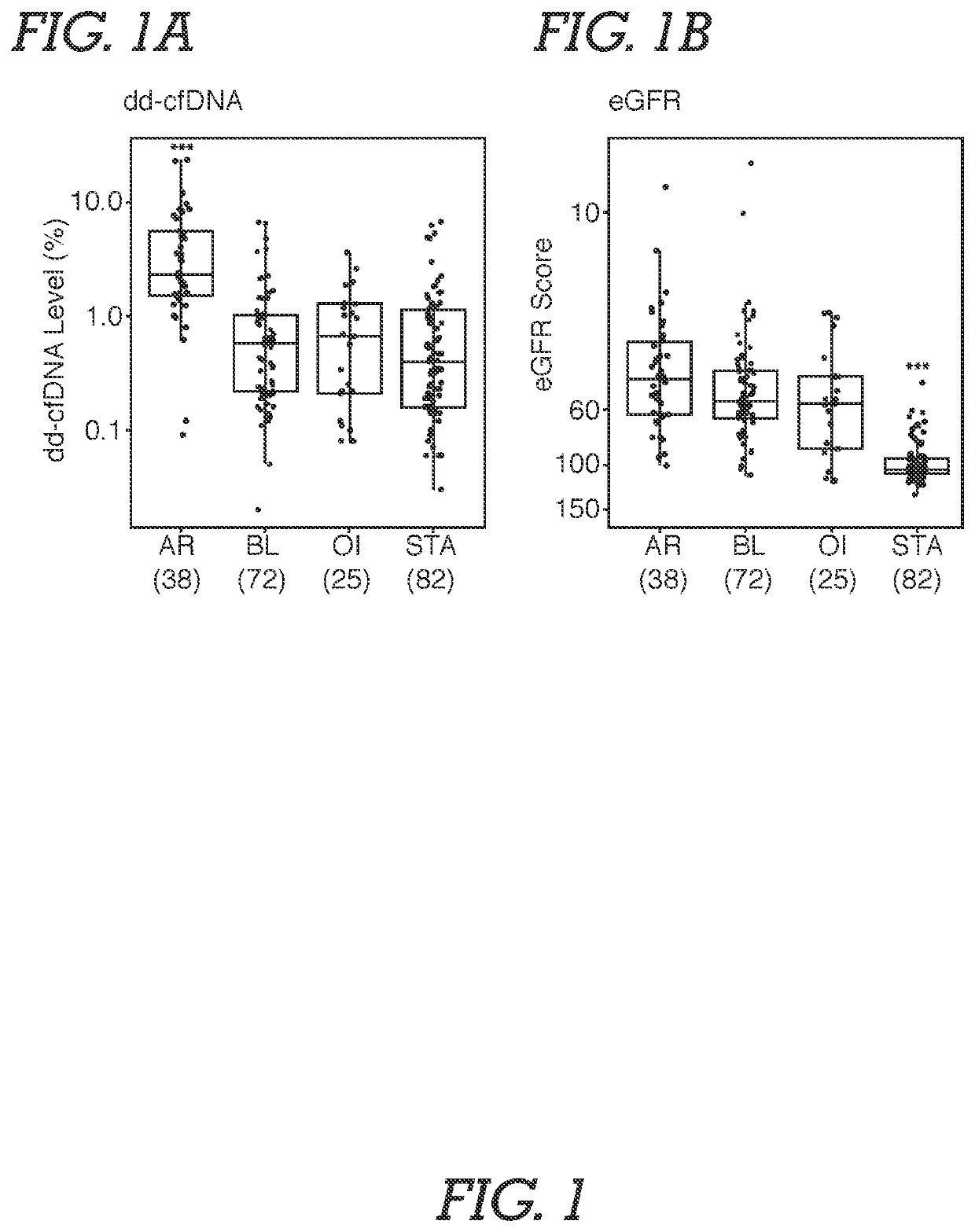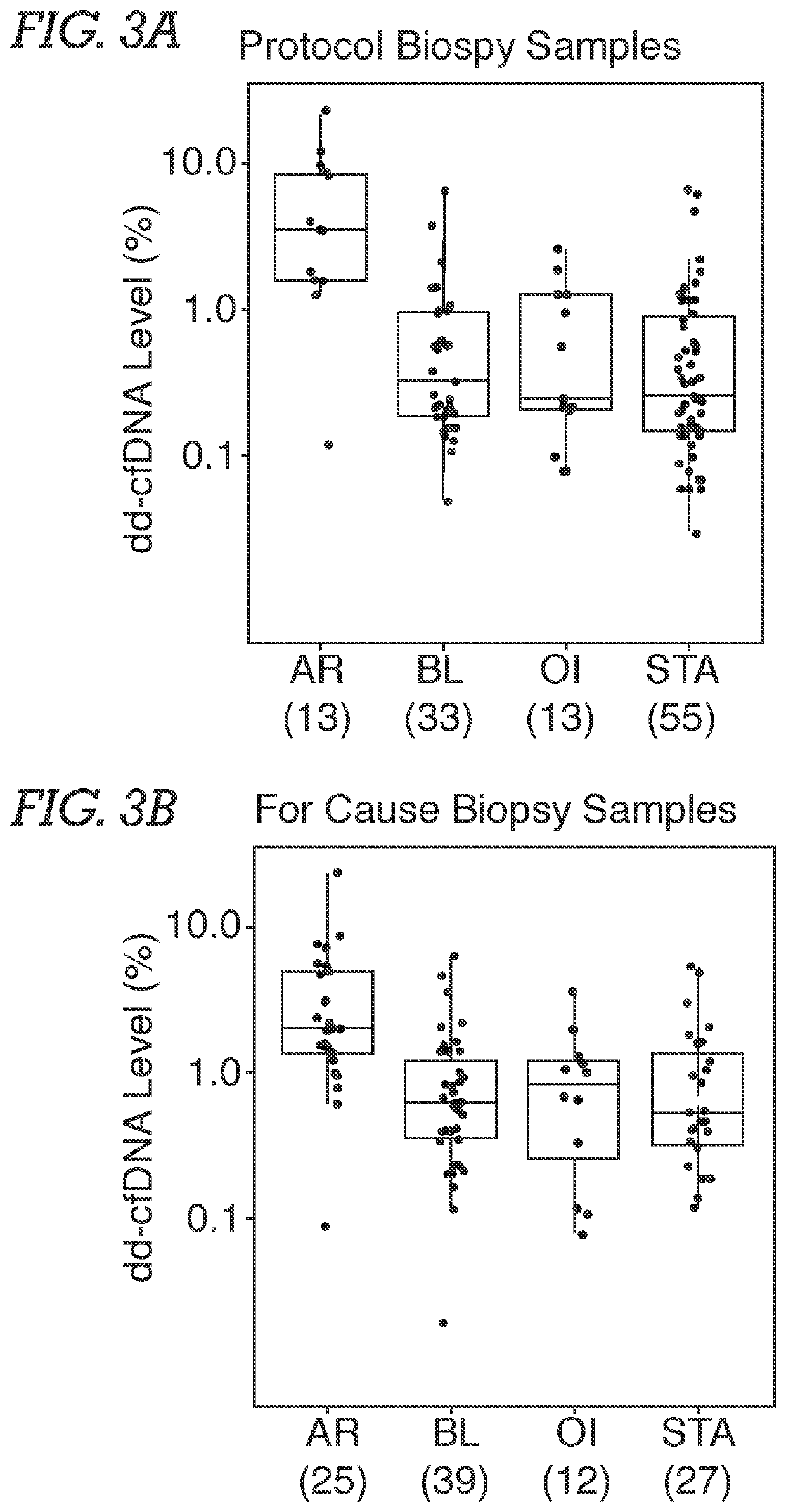Optimizing Detection of Transplant Injury by Donor-Derived Cell-Free DNA
a cell-free dna and transplant technology, applied in the field of optimizing the detection of transplant injury, can solve the problems of serious graft rejection, delayed injury, and low detection efficiency, and achieve the effect of rapid detection, inexpensiveness, and effective
- Summary
- Abstract
- Description
- Claims
- Application Information
AI Technical Summary
Benefits of technology
Problems solved by technology
Method used
Image
Examples
example 1
g Detection of Kidney Transplant Injury by Assessment of Donor-Derived Cell-Free DNA Via Massively Multiplex PCR
[0071]Study Population and Samples. Male and female adult or young adult patients received a kidney from related or unrelated living donors, or unrelated deceased donors. Plasma samples were obtained from an existing biorepository; time points of patient blood draw following transplantation surgery were either at the time of an allograft biopsy or at various pre-specified time intervals based on lab protocols. Typically, samples were biopsy-matched at time of clinical dysfunction and biopsy or at the time of protocol biopsy, at which time most patients did not have clinical dysfunction. In addition, some patients had serial post transplantation blood drawn. The selection of study samples was based on (a) adequate plasma being available, and (b) if the sample was associated with biopsy information. Among study samples, 72.3% were drawn on the day of biopsy. Patients without...
PUM
| Property | Measurement | Unit |
|---|---|---|
| threshold active rejection | aaaaa | aaaaa |
| concentration | aaaaa | aaaaa |
| concentration | aaaaa | aaaaa |
Abstract
Description
Claims
Application Information
 Login to View More
Login to View More - R&D
- Intellectual Property
- Life Sciences
- Materials
- Tech Scout
- Unparalleled Data Quality
- Higher Quality Content
- 60% Fewer Hallucinations
Browse by: Latest US Patents, China's latest patents, Technical Efficacy Thesaurus, Application Domain, Technology Topic, Popular Technical Reports.
© 2025 PatSnap. All rights reserved.Legal|Privacy policy|Modern Slavery Act Transparency Statement|Sitemap|About US| Contact US: help@patsnap.com



